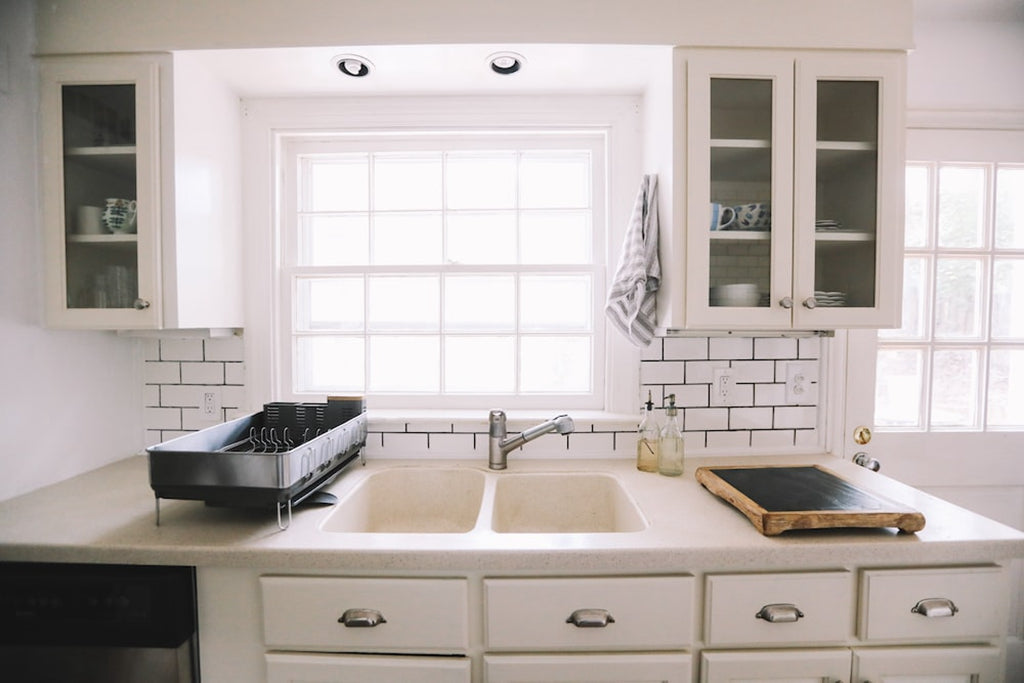
Tips on Installing a New Kitchen Faucet
Share
Installing a new kitchen faucet can be a daunting task for many. But with the right set of tools, knowledge and preparation, it can be a relatively simple job. Here are some tips to keep in mind when installing a new kitchen faucet:
Step 1: Make A Plan
Before you start the installation process, it’s important to make sure that you have all the parts and tools you will need. Measure the distance between the hot and cold water line connections and make sure to buy the right faucet that fits the existing connections.
Step 2: Turn Off the Water Supply
Turn off the water supply before starting the installation. This will help avoid any water damage or flooding.
Step 3: Unscrew and Disconnect Existing Faucet
Unscrew the existing faucet to disconnect it from the water supply lines. Be careful not to damage the existing plumbing when removing the faucet.
Step 4: Assemble and Attach New Faucet
Carefully assemble the new faucet parts, following the instructions in your product manual. Attach the new faucet to the existing water supply lines, making sure to avoid any leaks.
Step 5: Precaution
- Don’t overtighten the connections. Overtightening can cause damage to the plumbing and faucet.
- Use pipe dope or sealant around the connections, to prevent leaks.
- Check for leaks after you’ve finished the installation. Turn on the water supply to make sure there are no leaks.
Installing a new kitchen faucet is a relatively simple task if you are well prepared and have the right set of tools. Follow these tips and you won’t have any problems with your new kitchen faucet installation. Installing a new kitchen faucet is a great way to give your kitchen a fresh, updated look. Although the process can seem daunting, it can be done with a little bit of patience and some careful attention to important details. Here are some tips to help you succeed in replacing your kitchen faucet:
1. Choose your new faucet carefully. There are a lot of different styles, finishes and sizes of kitchen faucet to choose from, so make sure you find one that fits in with your decor and fits the sink properly. Pay attention to the size of the base plate, whether you need a single handle or a two handle model, the reach of the spout, the type of finish and the number of holes needed for installation.
2. Shut off the water supply and drain the lines. Before starting the installation, be sure to turn off the water supply for the sink and drain the lines by running the faucet until the water stops running.
3. Install the new faucet. Remove the existing faucet and clean the space where the new faucet will be installed. Place the new faucet into the sink, making sure that the gasket is in place and the bolts fit properly. Tighten the bolts and check for leaks. Once the faucet is firmly in place, attach the supply lines and turn the water back on.
4. Connect the parts. There are several different parts that will need to be connected to the new faucet before it can be used. This includes the hot and cold water lines, the spray hose, the drain pipe and the control valves. Be sure to follow the directions that came with the new faucet to properly connect all of the pieces.
5. Test the faucet. The final step before enjoying your new faucet is to turn the water on and test it to make sure that it works properly and there are no leaks.
Installing a new kitchen faucet can be an intimidating task, but with the right tools and a little bit of effort you can easily replace your old fixture and give your kitchen an updated look. With these tips, you’ll be able to install your new faucet with confidence and give your kitchen a fresh, new look.
